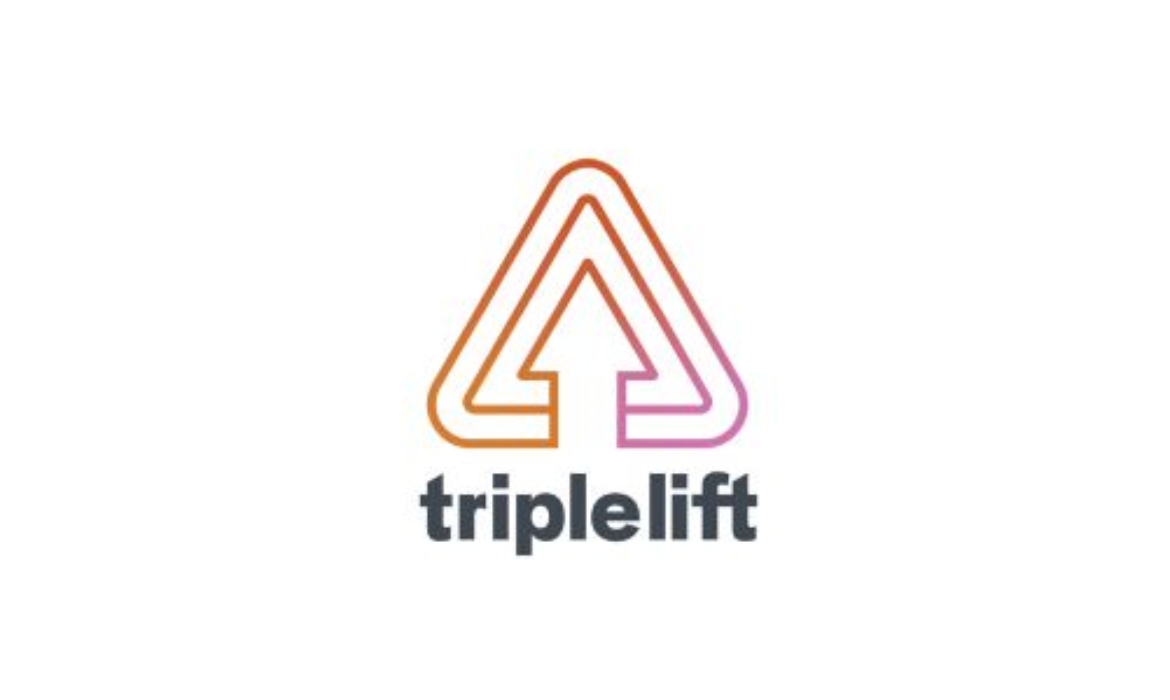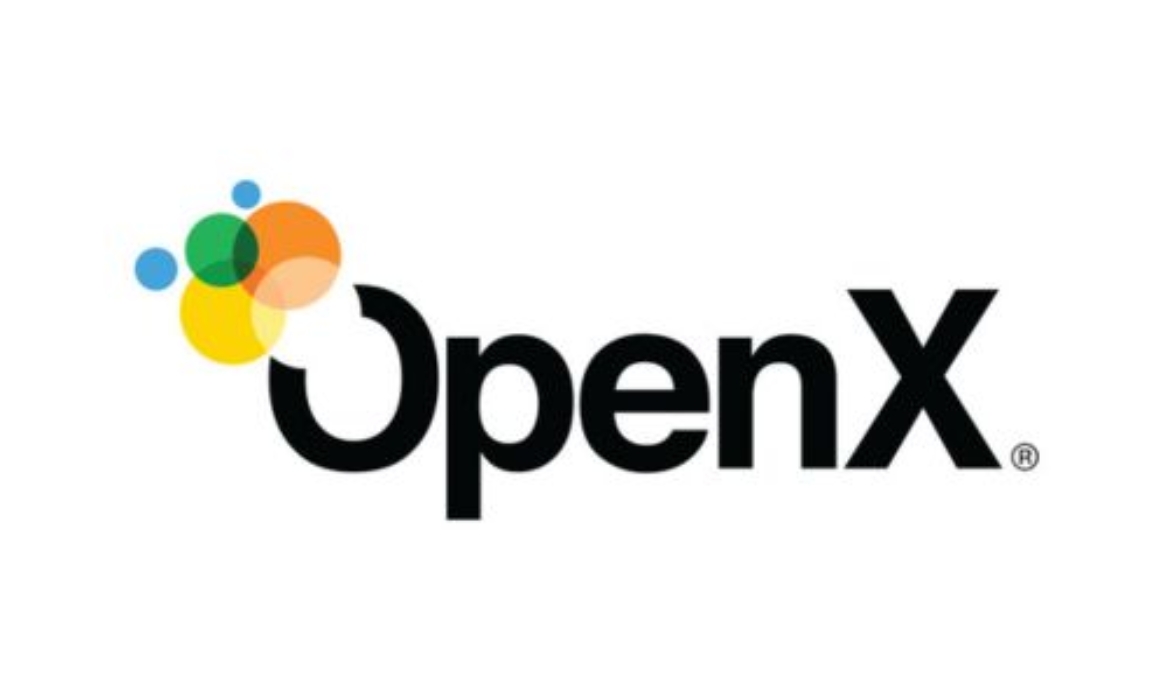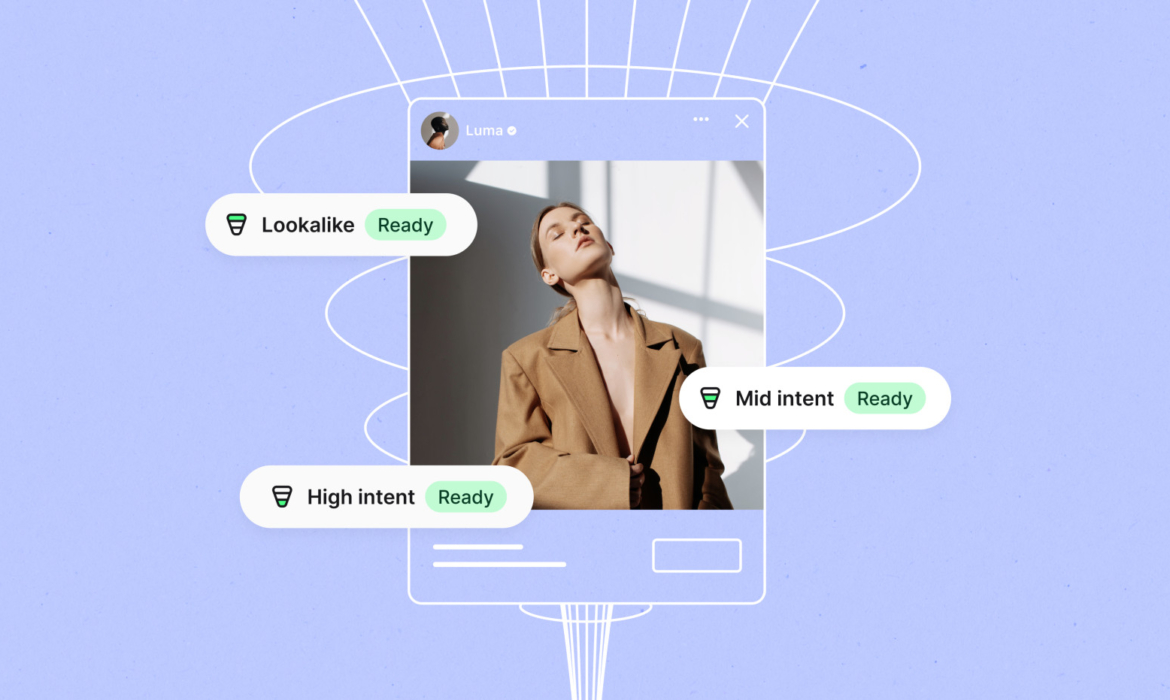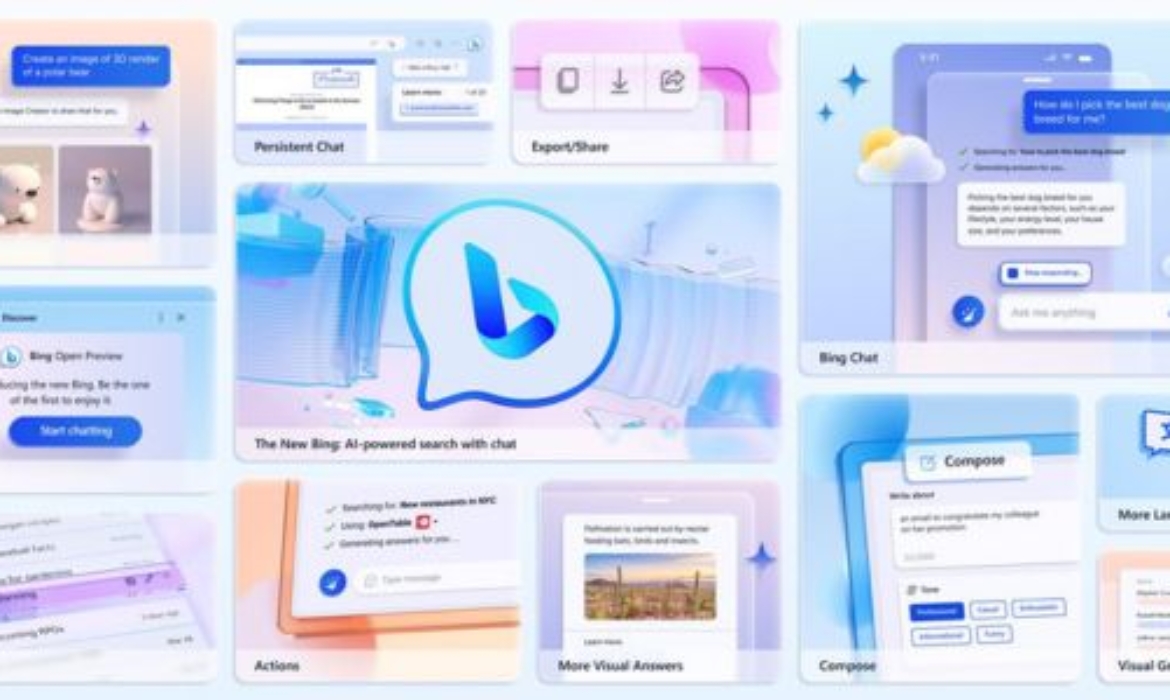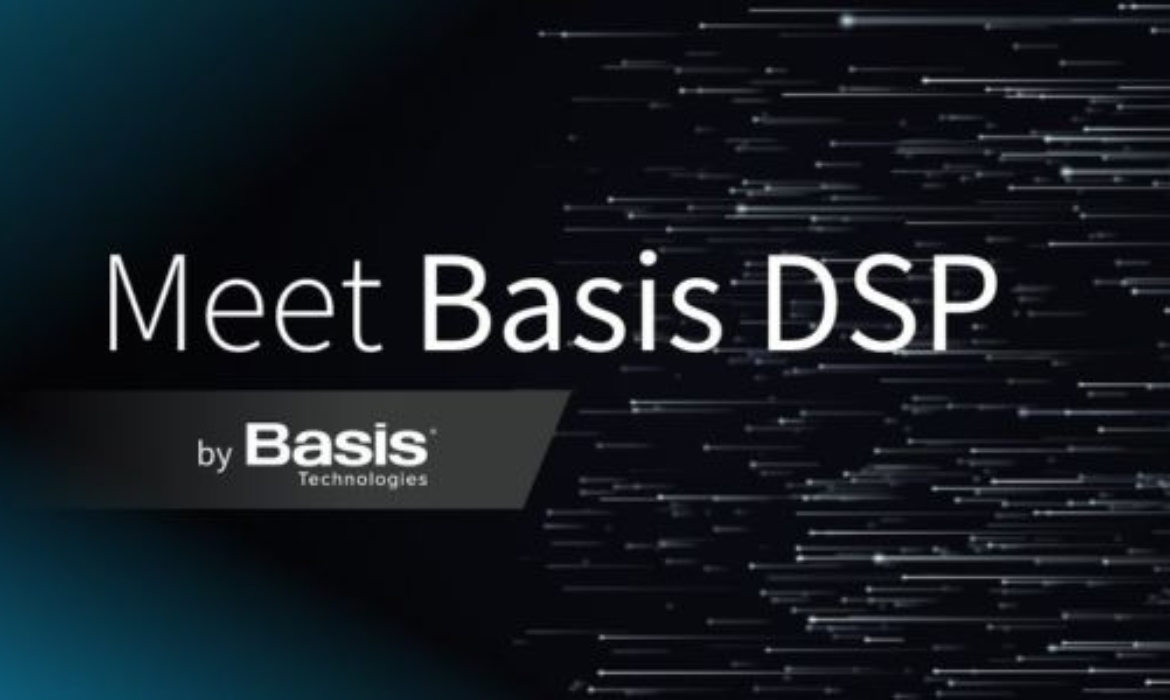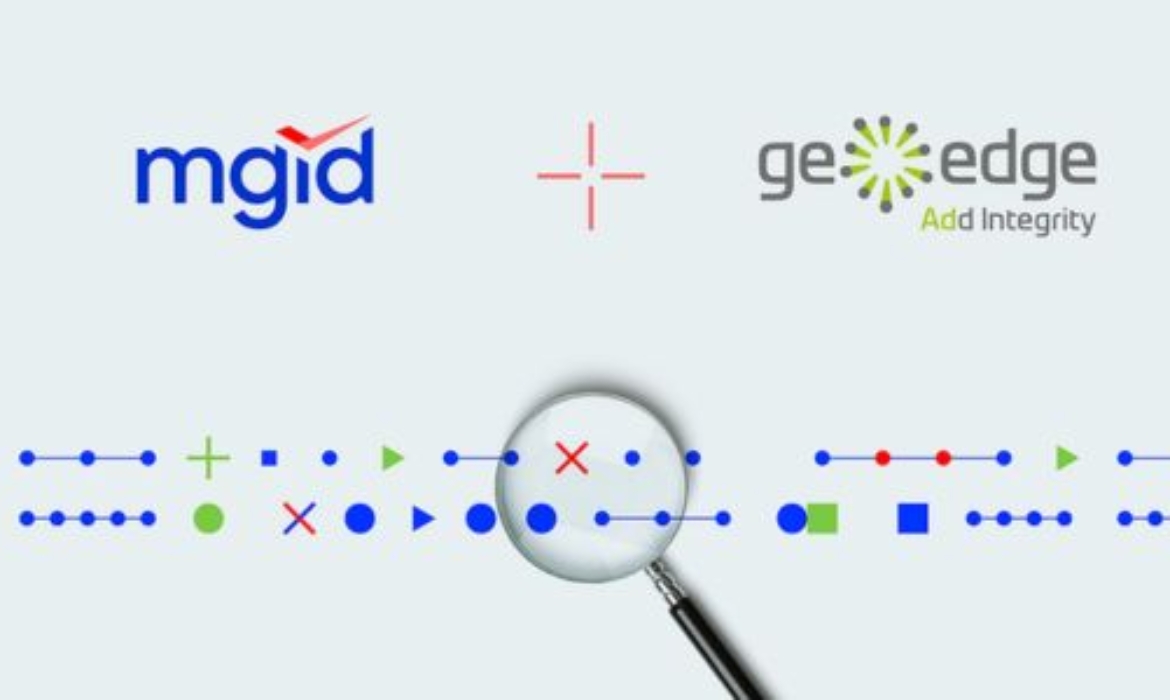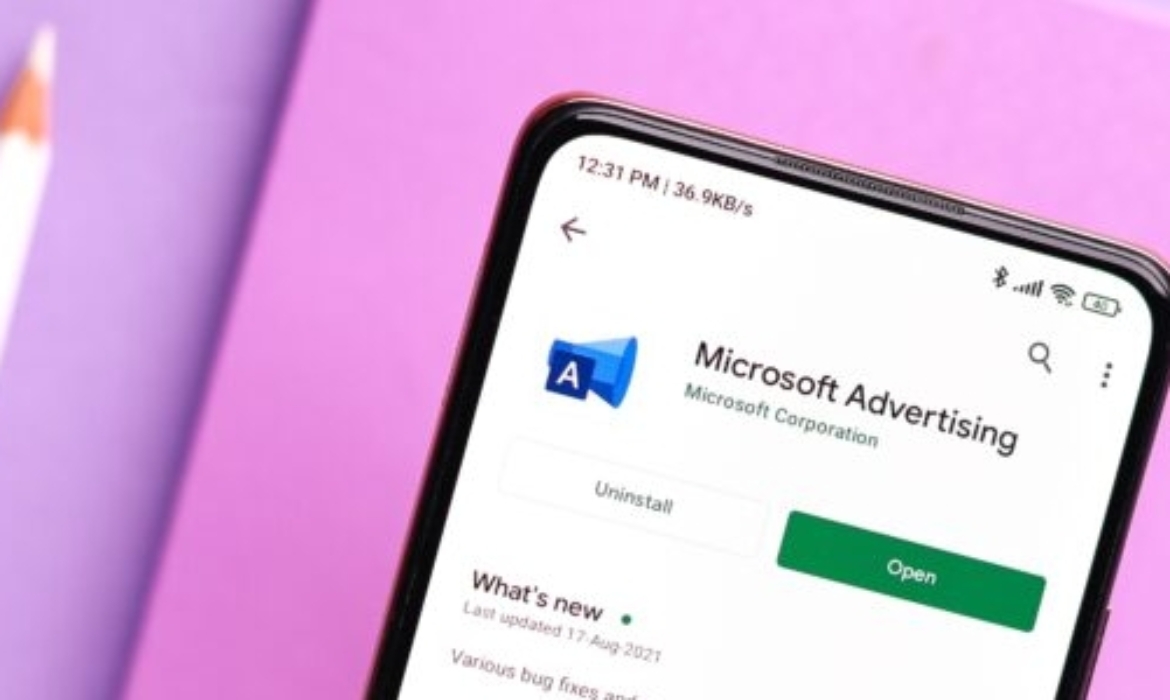TripleLift’s First-Party Data Targeting Solutions Shines Sans Cookies
TripleLift, the ad tech platform boosting digital advertising across all screens made the first-ever large-scale test findings public, demonstrating the effectiveness of its recently announced first-party data targeting solution throughout the web. This includes cookie-restricted settings too. Results reveal that when a third-party cookie was not accessible, the offering significantly improved results for both advertisers and publishers. It also states that first-party data outperforms both cookie and non-cookie buys.
The solution, known as TripleLift Audiences, is especially successful in tackling approximately 50% of the internet that already works without cookies. Furthermore, it forges a new path as the sector gets ready for additional addressability disruptions in 2024. Currently, cookie-free environments account for 47% of all ad requests worldwide. Beginning in January 2024, Google is planning to phase out the use of third-party cookies throughout the whole ecosystem of its Chrome browser. About 90% of the open web will no longer be reachable in this way as a result of this change.
Advertiser Results
The outcome presented in collaboration with a significant international advertiser in consumer electronics demonstrated higher performance for impressions enhanced with publisher first-party data. When compared to impressions without first-party data, but with a combination of third-party cookies and no cross-domain identifiers, the advertiser obtained a 33% reduced cost-per-click. With delivery and analysis of 230 million impressions, the test was carried out on a large scale.
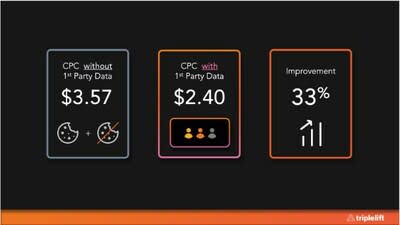
Image credit- TripleLift
How publisher first-party data works
Since TripleLift Audiences’ introduction in June of this year, numerous brands and agencies have conducted sponsored campaigns utilizing its first-party data segments. This method produces curated segments utilizing publishers’ data to identify and reach audiences on their own websites, as opposed to placing cookies on visitors and tracking them throughout the web. With more than 10,000 sites now signed up, this method of quality targeting covers 800 contextual and behavioral audience segments. Furthermore, it also covers 30 billion daily ad impressions without the need for third-party cookies.
Read More: TikTok Expands Measurement Suite with First-Party Solutions
Publisher results
The test showed improvement for publishers as well, with CPMs rising by 26%. Publishers may now re-offer those views through first-party data targeting thanks to TripleLift Audiences. It enables them to monetize content that they were unable to target previously due to third-party cookie deprecation.
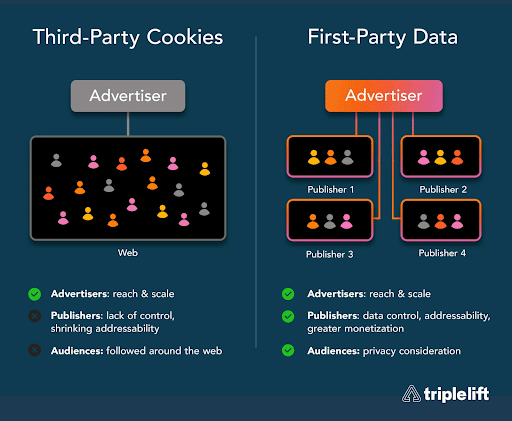
Image credit- PRNewswire
Due to two factors, TripleLift has been able to offer this service. First, it used the Zurich-based DMP 1plusX it acquired in 2022. It did so to build the advanced technology, data protection, and privacy requirements needed to develop a workable first-party data segmentation strategy. Second, it used its established, trustworthy connections with publishers to create integrated native ad products. Publishers and advertisers in the U.S. can both use TripleLift Audiences at the moment. In 2024, it will launch in European markets.
Here’s what they said
Ed Dinichert, Chief Revenue Officer at TripleLift said,
We have been discussing the coming cookie-pocalypse as an industry, but often forget that almost half the internet is already unaddressable. This is a boiling the frog moment happening right before our eyes. While many ideas have been proposed, there have never been concrete results showing that any one of them can address deprecation at scale – until now. This solution is effective for advertisers today.
Airey Baringer, VP of Product Management at TripleLift added,
First-party publisher data is underutilized in the programmatic ecosystem. TripleLift Audiences enables easy activation of first-party data to improve targeting on every impression, with or without third-party cookies. The data is superior and outcomes are improved for both publishers and advertisers. This is a win-win for the programmatic ecosystem. Publishers win because they monetize more of their inventory, leading to higher effective CPMs. Advertisers win because they can target more efficiently without third-party cookies, leading to lower CPCs and improved efficiency against all post-click metrics.
Paul Bannister, Chief Strategy Officer at Raptive commented,
TripleLift Audiences has enabled us to drive greater monetization of our inventory, putting more money into the pockets of the 5,000+ creators and publishers we work with – and first-party data is unlocking that opportunity. This presents a big advantage for us and other publishers in the ecosystem, and we’re excited to be at the forefront of testing these new cookie alternatives.
About TripleLift
TripleLift is an advertising platform aiming to elevate digital advertising with gorgeous creative, reliable publishers, useful data, and clever targeting. It assists publishers and platforms in monetizing their operations through more than 1 trillion ad transactions each month. The most popular companies in the world use technology to reach consumers through online video, linked television, display ads, and native advertisements. Because of its cutting-edge solutions, first-rate formats, and helpful professionals committed to enhancing their success, brand and enterprise customers choose TripleLift. The company is NMSDC certified, eligible for different spending targets, and is dedicated to economic inclusion as part of the portfolio of Vista Equity Partners.
Read More: Google’s Phasing Out of Third-Party Cookies: A Paradigm Shift in Digital Advertising
OpenX Launches ConteX: A Flexible, Contextual Advertising Marketplace
OpenX Technologies Inc., one of the top omnichannel supply-side platforms in the world, announced the debut of ConteX. Within the SSP, is an OpenX marketplace. It gives companies and agencies the ability to use both pre-made and custom premium contextual advertising solutions without requiring them to sign cumbersome contracts or wait a long time. Without relying on third-party cookies, this brand-new, future-proof invention delivers end-to-end targeting and activation.
The future of contextual buying
Buyers are increasingly looking for accurate and high-quality regionally suitable targeting solutions that eliminate the need for them to negotiate separate agreements with various data partners. 54 percent of marketers intend to employ contextual data more frequently in their campaigns as targeted media-buying changes in reaction to third-party devaluation. Additionally, ConteX provides contract-free contextual targeting options for customers. As a result, they can directly activate premium data partners within the SSP on conditions that have already been agreed upon. Additionally, it makes it simple for advertisers to implement strategies that are most effective in their area without having to negotiate terms with each partner. Additionally, ConteX blends contextual and supply-side targeting to give more premium supply, higher accuracy, and unmatched insights into programmatic campaigns.
Read More: Adlook – Adsquare Join Forces for Advanced Brand Growth Solutions
Effective targeting, contract-free activation, and broader scale
With ConteX’s data partners reaching well beyond on-page content, contextual targeting has grown more sophisticated and efficient. Cooking aficionados are targeted in any vertical or type of premium content they are engaging with, rather than only through cooking-related material, using models to forecast audience behavior. With ConteX, OpenX continues to advance in its mission to create solutions that prioritize both innovation and quality. Without using cookies or authenticated IDs, each ConteX premium data partner employs a unique, proprietary methodology to let customers reach highly targeted audiences anywhere:
- Audigent: a data activation, curation, and identity platform
- Captify: a search intelligence platform for the open web
- Cross Pixel: audience and contextual targeting solutions
- Dstillery: a leading AI ad-targeting company
- Permutive: an audience platform powered by publisher first-party data
- Silverpush: a hyper-contextual advertising platform powered by AI
- Sqreem: a digital behavior aggregator where AI merges deep insights and media targeting.
OpenX creates an audience and shares a data-driven deal ID with the buyer to activate these segments. The buyer then activates the deal ID within their preferred DSP after working directly with the data partner to set up the audience.
Here’s what they said
Joseph Worswick, VP of EMEA and Head of Global Sustainability at OpenX said,
This enhancement in OpenX’s supply-side targeting capabilities provides brands with a valuable solution ahead of the deprecation of the third-party cookie. This off-the-shelf innovation helps brands navigate complex regional compliance requirements related to data and targeting, reducing the workload of programmatic traders. This is an important step towards providing effective targeting solutions for the open web, which will ultimately help brands reach their desired audiences more effectively.
Read More: Captify and Adform Partner to Pioneer Contextual Activation Solution
Comscore’s Proximic Unveils New AI-Powered Contextual Solutions for Programmatic
Proximic by Comscore, the company’s dedicated programmatic business, announced the release of three new and enhanced contextual solutions. These technologies are made to offer ID-free audiences scalable access across platforms. Comscore is the leading supplier of audience and content-targeting tools for programmatic activation. With more than 2,600 predictive ID-less audiences and content-level solutions available across CTV, linear, digital, DOOH, and audio, the division, which launched in March 2023, gives end users access. The additional capabilities allow targeting based on demographics or specific show viewings. Significant buy-side and sell-side platforms can also access it.
Trio of Novel Solutions
The Proximic Activation Platform, Show-Level Linear and Streaming Audiences, and ID-less Demographic Segments are three new and expanded solutions. They are run by double opt-in digital panels from Comscore. Additionally, they utilize Proximic, the top contextual AI engine from Comscore. Each solution is intended to push data to the edge of scalability, opening up new audiences and efficiency for more than 5,000 marketers globally. Clients of Proximic by Comscore are seeing considerable ROI gains.
Read More: Charting the Programmatic Frontier with Shashidhar Sharma, GroupM Nexus
Deep Dive into Proximic by Comscore’s new solutions for programmatic
ID-less Demographic Segments
With Proximic by Comscore’s privacy-focused, ID-free demographic segments, marketers can target content that has a high likelihood of being consumed by a certain demographic without using cookies. Additionally, they give publishers the opportunity to more effectively package their inventory for monetization in accordance with demographic criteria. This is specifically for those that have little authorized traffic for internal demographic data. These demographic categories offer an affordable approach to targeting important worldwide audiences for greater marketing performance without relying on user identifiers, thanks to Proximic’s contextual engine, which is supported by artificial intelligence.
Show-Level Linear and Streaming Audiences
Marketers can now access show-level audiences at scale and across all digital channels thanks to Proximix by Comscore’s predictive audience technology. Marketers may contact viewers of the most watched show today with more than 1700 segments available.
Proximic Activation Platform
Comscore Proximic’s Activation Platform will give media firms and advertisers unmatched control over the targeting of their advertising campaigns. Advertisers using Proximic’s Activation Platform can make use of Comscore’s unrivaled data assets thanks to the platform’s robust custom audience and content targeting capabilities. Among these is the recently introduced capability to target viewers of extremely particular product advertisements on TV. Marketers will now be able to mitigate signal loss across programmatic CTV, digital, and social campaigns with immediate effect thanks to the ability to provide unique segments in one day and reach all significant DSPs, SSPs, and social platforms.
Here’s what they said
Rachel Gantz, Managing Director of Proximic by Comscore said,
We didn’t wait for signal loss to reimagine how contextual targeting can help advertisers and publishers today. These innovative solutions were built with privacy at the core and are changing how thousands of advertisers globally reach their consumers every day with greater precision and scale.
Gina Perino, VP of Ad Operations & Strategy, Blavity, Inc added,
By using Proximic’s ID-free demographic and behavioral targeting solutions, we have strategically evolved our approach to inventory monetization to ensure optimal targeting accuracy and precision while reaching maximum audiences, regardless of the presence of IDs. This is especially crucial in the face of increasing signal loss and privacy constraints. This proactive approach helps us reduce dependence on third-party segments that may become obsolete when third-party cookies in Chrome are eliminated in 2024.
Kyle Vidasolo, President, Outcomes at OMG stated,
Contextual solutions from Proximic by Comscore offer the industry a path to drive outcomes that are scalable, precise, and privacy-centric. Solutions like this level up what is now possible with programmatic advertising, expand the options we can offer clients to drive guaranteed outcomes faster, and complement our existing data-driven targeting strategies.
About Proximic by Comscore
Comscore, Inc.’s Proximic by Comscore is a pioneer in programmatic targeting. With Proximic by Comscore, media buyers and sellers can enhance the scope and effectiveness of their campaigns. It is supported by the industry’s top contextual NLP engine and Comscore’s trusted datasets. Proximic by Comscore supports the expansion of the programmatic ecosystem with its cutting-edge suite of ID-based and ID-less audience and content targeting segments, empowering clients and partners to keep implementing effective advertising strategies.
Read More: Adverty Launches First Programmatic VAST Video in In-Play Ads
Shopify Audiences Expands Ad Targeting Capabilities with New Integrations
Shopify Audiences, Shopify’s ad tech integration offering revealed a new ad targeting capability. Additionally, it increased the number of its partners. Initially, Shopify Audiences debuted with just Google and Meta. Later on, Pinterest was included in the mix. Recently, Shopify Audiences announced new connections with three significant ad platforms, Snap, TikTok, and Criteo. The collaborations increase the effectiveness and reach of Shopify Plus merchants, enabling them to more precisely target customers. The platforms will be able to connect to Shopify utilizing their preferred ad network for modeling data.
Shopify audiences
Shopify Audiences was introduced last year with the goal of streamlining client acquisition and assisting retailers in raising their return on ad spend (ROAS). It now offers greater analytics and links to new ad channel partners, including Snap, Criteo, and TikTok, thanks to an updated version. It also has the best algorithms yet, which can cut customer acquisition costs by as much as 50%. The strong ad platform alliances enable Shopify Plus retailers to contact their target clients more extensively and affordably.
Benchmarking functionality for optimized ad performance measurement
With the help of Shopify Audiences’ benchmarking feature, retailers can assess how well their advertising campaigns are performing against those of other companies in a similar industry. The function also offers additional insights and makes it easier to make data-driven decisions. It enables businesses to improve the effectiveness of their advertising. The updated features add to a tool that is always being improved to increase consumer acquisition and return on advertising spend. For instance,
T-shirts created to order are available from a vendor. Despite the fact that they sell clothing, they are not high-end outfit designers. With Shopify Audiences’ new benchmarking feature, they can assess the success of their campaigns against those of other, comparable businesses, not only clothing stores. With a more apples-to-apples comparison, this offers more insightful information.
Read More: Roku-Shopify Revolutionize TV Ads By Enabling On-Screen Purchases
The Shopportunity
Shopify Audiences does not collect or offer user-level data. It can create unique audiences who could be interested in a certain product. This is thanks to Shopify’s data modeling hub, which is based on Shopify’s analysis of its merchant base. In comparison to other payment-based advertising products, Shopify Audiences offers less privacy exposure. Shopify is now at ease adding third-party programmatic thanks to Criteo.
The algorithm becomes more effective as more companies use Shopify Audiences and sign up for the platform, using particular insights from customers across participating shops. This in turn boosts output, creating a positive feedback loop. The success of Shopify Audiences is heavily dependent on this loop. Additionally, it’s stated that Shopify Audiences is a major factor in why merchants decide to upgrade to Plus, with many implementing it an average of one week after their upgrade.
Shopify Purpose
The Shopify Plus package, a more expensive membership level for their e-commerce platform, includes Shopify Audiences. Shopify doesn’t receive any CPM revenue. Furthermore, unlike retail media networks, it doesn’t receive a cut of revenues or a high CPM associated with such purchases. This implies that Audiences aren’t always a significant revenue generator. Instead, as it includes new merchants in the Plus category, it gains value. Increased sales from all merchants benefit Shopify, which receives a fee for processing payments. Shopify could easily enter the media category and tie its data to CPM if it wanted to increase its audience revenue. It is the only platform that Meta would consider using to replicate its sales attribution network for e-commerce sellers.
Read More: Criteo’s Commerce Max DSP Unites Retail Media with General Availability
Shopify Momentum
The products from Shopify work together to develop better services for retailers and give them a unified offering. Shopify Plus retailers can use their Shopify Credit cards to pay for their advertising costs while receiving cash back. The audience is a special advantage that only Shopify offers. It uses the combined strength of Shopify merchants to make it easier for them to efficiently attract new clients. Shopify makes investments in this area to help companies reach clients worldwide. Retailers could be reluctant to provide information that will be gathered and then used by other merchants, including potential rivals. They may view their involvement with Shopify Audiences as a means to connect with fresh potential clients.
Here’s what they said
Shopify’s VP of Advertising, David Wurtz said,
Shopify is at the forefront of commerce. Wherever there’s an opportunity to connect merchants and buyers, Shopify is there first. Since launching Shopify Audiences last year, our algorithms have only gotten smarter and more effective thanks to the collective power of our merchants. We’ve long said that commerce is not a zero-sum game. Together, the independent merchants on Shopify help each other win. A lot of the inventory on the open web is underappreciated and underpriced. With the addition of Criteo, Shopify can drive “a lot of volume” of ads to the web and improve customer acquisition costs for its merchants, just like the big social platforms have for particular brands or categories.
Rory Mitchell, Criteo’s GM of global growth added,
Aside from access to Shopify custom audiences, Criteo “can then show the power of our platform, which allows a Shopify merchant to think about things like onboarding their first-party data to our platform for retention or retargeting campaigns. It’s a “natural progression,” he added, from the modeled approach to Criteo’s shopper graph products, which do use onboarded first-party data. And we know how to get performance for these customers in a way that is really scalable across the open internet.
Ali Rana, Global Head of Revenue Partnerships for Snap commented,
We’re thrilled to team up with a commerce leader like Shopify to enable merchants to reach more high-intent shoppers on Snap.
Read More: New ‘Instacart for Shopify App’ Revolutionizes Merchant Advertising
Microsoft Empowers Publishers with Content Control for Bing Chatbot
Microsoft recently provided publishers with new tools to control how their material is used in the brand-new Bing AI-powered chatbot component. New meta tags like NOCACHE and NOARCHIVE are part of these solutions. These restrict or block material in Bing Chat. Normal Bing search results will still include blocked content. The internet giant also hopes to allay publishers’ worries while enabling website discovery through standard search results.
Taking Care of Publisher Issues
Publishers have expressed concerns about the unauthorized use of their content ever since Microsoft announced its updated Bing search engine with chatbot features. Artificial intelligence (AI)-based chat features make publishers uneasy when they can’t regulate how the site’s material is used. Microsoft has recognized the need for greater control over how their content is used in Bing Chat following discussions with web administrators and the creators. Microsoft has provided a setting that enables users to control the content of chat responses. Additionally, it responds to publishers’ needs while enabling website discovery through regular search results. Microsoft chose to respond right away to publishers’ worries.
Read More: Microsoft Advertising Enters the Video and CTV Advertising Realm
Enhanced Content Controls for Publishers
Website admins can use the regular controls Microsoft has created to figure out the index and snippet length on Bing. The update gives publishers more control over how their content is used. This concerns both Bing Chat and the development of Microsoft’s GAI foundation model. Microsoft is introducing existing meta tags to restrict usage in Bing Chat answers in response to publishers’ worries. Publishers now have a variety of options for managing their material, and each one affects how Bing Chat and AI models use it. The following choices are available to publishers so they can manage how Bing Chat uses their material.
- Taking no steps could imply that content can be utilized to instruct Microsoft’s AI models and Bing Chat features.
- Only titles, snippets, and URLs can be used to train AI models or shown in Bing Chat when a NOCACHE tag is added. Publishers can consent to Bing Chat mentioning their websites.
- Added a NOARCHIVE tag to stop it from being used for AI training or Bing Chat.
Moreover, Microsoft also suggests combining the NOCACHE value with the NOARCHIVE value. This is because many paywall websites only employ the NOARCHIVE tag. Bing Chat users will locate paywall content more accessible thanks to this.
Moving forward
Microsoft and Google unveiled their views on the next search stage earlier this year, in different announcements. This will be enabled by generative AI (GAI). Microsoft is dedicated to maintaining open communication with publishers and the online ecosystem as it collaborates with the industry on upcoming AI standards. The tech behemoth guarantees web administrators enough time to prepare for and move to emerging AI standards. Publishers are urged to read Microsoft’s documentation on meta tags for more information.
Read More: Microsoft Advertising Enhances Search and Ads with Generative AI
Microsoft Advertising Enhances Search and Ads with Generative AI
Microsoft Advertising’s search and advertising platforms have received a number of generative AI improvements. They plan to completely reimagine how users engage with search engines and online advertisements. The internet giant announced earlier this year that it would include generative AI into its services to alter how they functioned. The objective of Microsoft is to transform search and advertising using generative AI. The newly introduced functions, Compare and Decide Ads, Ads for Chat API, and Copilot are a part of that mission.
Microsoft and AI Integrations
According to Microsoft’s data, younger people enjoy using Bing Chat, the company’s AI-powered conversation function. Additionally, it motivates people to decide more quickly. Users on Chat apparently make decisions in half the time it takes them to do so using conventional search techniques. Microsoft’s Edge browser had tremendous growth, which further internal statistics attributed in part to the seamless integration of Bing AI Chat.
Compare and Decide Ads Offering engaging conversational experience
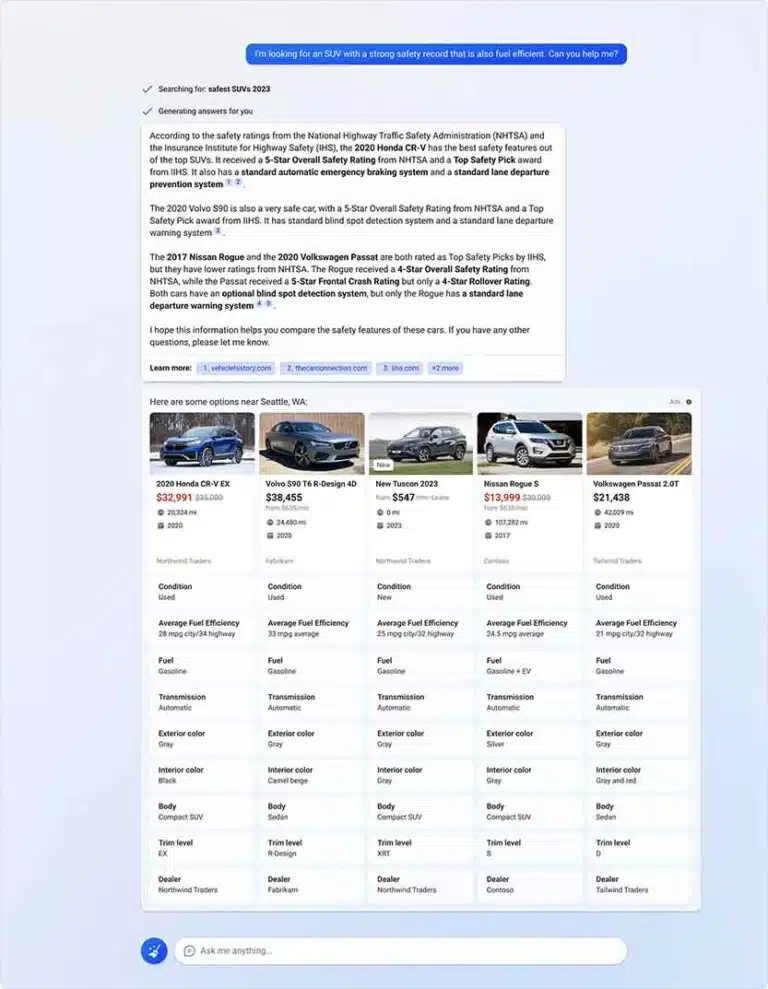
Image credit- Search Engine Journal
Microsoft has launched several innovative advertising formats specifically for the Bing Chat experience. Ads called “Compare and Decide” are the first of them. Online buyers will be able to compare various products using the criteria they find most important thanks to this new structure. These advertisements, scheduled for a closed beta in early 2024, will transform advertising in the travel, auto, and retail industries by compiling all pertinent facts into a clear table. To further assist advertisers in connecting with AI chat users, Microsoft also expects to roll out new Conversational Ad experience forms over the upcoming months.
Read More: Media.Monks Unveils AI Integration for Customized Content
Ads for Chat API Partners
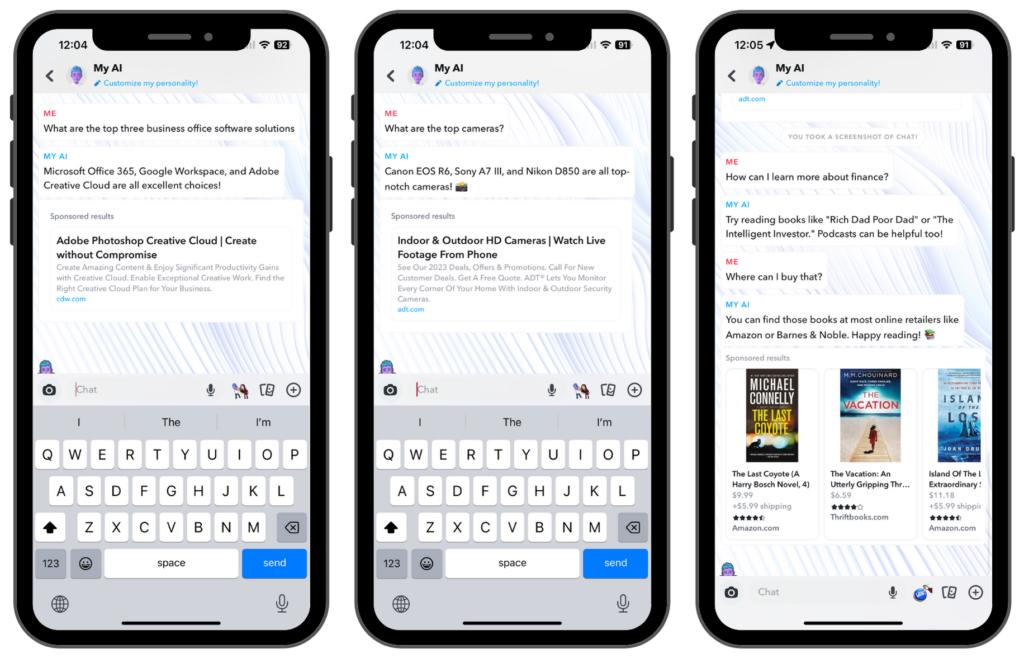
Image credit- Search Engine Land
Microsoft has revealed the first two partners for its new offering leveraging the new advertising for Chat API in addition to the new Conversational Ad Experience. On Snapchat’s My AI chatbot, the well-known social media platform, which is visited by 150 million users worldwide, makes use of the technology to serve Sponsored Links in pertinent material and interactions that feel natural to the content flow.
Axel Springer’s Hey_, which receives 16–17 million visitors per day, has also adopted the advertising solution. It runs on BILD.de. It is sponsored by Microsoft Advertising’s Ads for Chat API, and powered by Microsoft Azure Open AI Services. Microsoft added that it would keep improving its API selection in response to feedback from its partners and advertising. The internet giant plans to reply to comments made by its current partners regarding the Ads for Chat API service before further extending it.
Copilot for Microsoft Ads
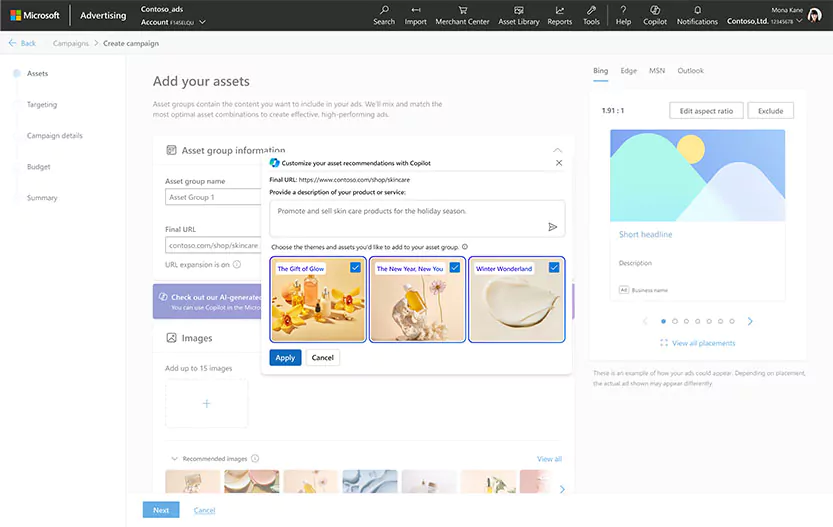
Image credit- Search Engine Journal
The Copilot in the Microsoft Advertising Platform is another revolutionary feature. This knowledgeable assistant was created with advertising and agencies in mind. Additionally, it makes use of AI to provide suggestions for product headlines, photos, and descriptions. Advertisers can use it by simply describing the material they require, such as a picture. Based on their descriptions, Copilot will produce ideas. Microsoft is testing the service with a select group of marketers before making it available for open beta testing in the upcoming months.
Unified Copilot
Microsoft’s recent announcement of AI-enhanced Windows 11 platform has increased the appeal of its products. The company’s online and productivity applications Bing, Edge, and Microsoft 365 will all be compatible with the new AI tool, named Copilot. On September 26, the upgraded software will be released together with the most recent updates to Windows 11. On Nov. 1, when the eagerly awaited proprietary AI product will be sold, it will be accessible in Microsoft 365 Copilot.
AI’s continuously modifies advertising and search
The improvements made to Microsoft’s advertising and search features have a big impact on the advertising sector. This is because they provide better user experience and more precise targeting. It is crucial to stay up to speed with new ad products and targeting tools. It helps to guarantee that advertisers are providing the best user experience and reaching high-value customers,
Read More: Microsoft Advertising Enters the Video and CTV Advertising Realm
Basis Technologies Enables Real Time Snapchat Ad Evaluation Via DSP
Global programmatic advertising and media automation solutions provider, Basis Technologies, recently released a first-to-market integration. The solutions which utilize a demand side platform (DSP), will allow marketers to evaluate Snapchat ads. It is automation fueled, which enables smooth workflows and top performance. Basis media automation platform users can now obtain real-time performance information from Snapchat’s self-serve platform. With 750 million MAUs, Snapchat is a huge advertising platform. Basis is offering comprehensive campaign planning and analysis across programmatic, direct, search and social ad channels. With this, Basis is promoting interoperability in digital advertising.
Basis DSP for advertisers
Advertisers must collaborate with a wide range of platforms and providers as they attempt to reach consumers through digital devices. Each vendor has special features and user interfaces of their own. It’s essential to monitor ad performance across a variety of channels to assess the efficacy of campaigns and ad spending. Marketers can easily manage, measure, and analyze ad effectiveness with Basis’ comprehensive third-party platform connectors without having to switch between platforms. Campaigns are optimized using data for increasing the impact of marketing budgets.
Read More: iSpot acquires 605 To Boost TV Measurement, US Data Footprint
Basis Technologies and other integrations
Basis gets its ad delivery stats from major ad servers, social media platforms, search engines, and its built-in DSP. It already integrates delivery data from Google Search, Microsoft (Bing and LinkedIn), Meta (Facebook, Instagram) and TikTok among third-party ad providers. It makes cross-channel campaign planning, performance monitoring and pacing easier for media specialists. They substantially reduce the time needed to alter, prepare, and consolidate reports as well as check the status of campaigns that are currently running.
Benefits of data feed from Snapchat and other ad platforms integrated into Basis
Revenue
The everyday burden of finding errors to guarantee that every dollar intended across vendors is delivered is made easier by revenue. Additionally, it guarantees that financial reconciliation proceeds accurately and quickly.
Speed
In order to evaluate the pace of specific campaigns, media professionals must enter multiple platforms. Speed eliminates these processes and saves time, allowing them to see and address problems more quickly.
Control
Control gives media buyers the ability to pace and optimize campaigns as well as assess cross-channel campaign effectiveness based on an all-encompassing perspective.
Clarity
Clarity eliminates the need for manual spreadsheets or other data analytics tools to track third-party sources and allows for a centralized view of many sources.
Intelligence
As a single source of truth, intelligence eliminates data silos and compares user ad interactions across channels to total campaign engagement.
Read More: GroupM Bolsters Media Decarbonization with SeenThis Partnership
The only one of its kind integrations
No other media DSPs’ media management platforms include search and social media connectors that provide automated standardized reports for sources. Basis users don’t need to enter into third-party systems, retrieve campaign data, download spreadsheet reports with numerous line items, and clean up reports to align them with the desired data arrangement. Marketers may view performance information in real-time using Basis platform. It will help acquire insights on campaigns operating on Snapchat and other search and social platforms. It also includes programmatic, vendor-direct, search and social media advertising capabilities. The core of the platform is an award-winning omnichannel DSP that offers programmatic guaranteed and private marketplace partnerships.
Here’s what they said
Amy Rumpler, SVP of search and social services, Basis Technologies said,
Basis Technologies offers the only technology for marketers to manage Snapchat advertising alongside other advertising solutions commonly used. Snapchat continues to gain users and influence, making its campaign performance data an important aspect to automatically pull into our platform. With our latest integration, Basis continues to fill the needs of media agencies and teams that manage robust, broad campaigns to reach customers.
Read More: Basis Tech-FreeWheel Partner for Direct Access to Premium CTV Inventory
Google Opens Automatically Created Assets Publicly to Boost Efficiency
Google has made the most recent improvements to the conversational experience and automatically created assets for Google Ads available to the public. More users will be able to employ AI to increase the effectiveness of marketing campaigns. The new capability is an effort toward automating the workflow for advertising. ACAs were previously restricted to marketers running English-language campaigns during open beta. The ACAs, however, are now offered in seven other languages. In the upcoming months, automatically created assets will begin utilizing generative AI for advertisers with English assets in the U.S. and U.K. Google’s goal is to assist marketers in producing more assets that are better suited to users’ search queries.
A quick look at Automatically Created Assets
Automatically created assets are an opt-in campaign-level setting. Advertisers can select this setting to generate new assets (headlines and descriptions) to be used with the ones they already submitted for responsive advertising. These materials are created based on the specific context of each advertisement, which includes the landing page, current advertisements, and the ad group’s keywords.
Benefits of automatically created assets
Performance
It improves the efficiency of responsive search advertisements (RSA) by automatically adding more headlines and descriptions.
Relevance
Consistently improve the user experience on landing pages, ad copy, and inquiry pages.
Productivity
Reduce the amount of time spent manually writing effective ad copy.

Image credit- Google
Increase in Automatically Created Assets
The extension of automatically created assets is one of the most prominent improvements. Based on the unique context of an advertisement, such as the landing page or previous advertisements, this function generates personalized headlines and descriptions. The aim is to increase the Ad Strength indicator, which measures the efficiency of ads in responsive search campaigns. Marketers can remove any ACA they feel is unsuitable for their advertising. This feature, which was first only available in English, has since been made available in seven more languages. French, Italian, Japanese, German, Portuguese, and Spanish are among them.
ACAs can boost ad relevance by matching ads and landing pages better. However, it entails handing over authority to Google’s AI. For brands with severe compliance rules or industries with heavy regulation, this might not be appropriate. This is because the company won’t have complete control over the message of the advertisement.
Read More: Google Boosts Performance Max with URL Contains Targeting Tool
Utilize ACAs to deliver better-suited search advertising.
Advertisers will have two choices to start employing automatically generated assets:
- Turn them on by using the campaign setting
- On the Recommendations page, locate the “enable automatically created assets” suggestions and simply follow the on-screen instructions to get started
Create better search campaigns with Google Ads’ conversational experience.
The most recent large language model (LLM) innovation powers the conversational experience in Google advertisements. With the use of this technology, advertisers may communicate with Google advertisements in natural language to create campaign pieces. Building search campaigns makes it possible to achieve greater results with fewer resources. All that is needed for a campaign is the advertiser’s website URL, and Google AI will generate the rest. They will receive headlines and pictures from it. Marketers can interact with AI during each session to change suggestions and approve them prior to launching the campaign. Google has won praise for saving time and inspiring fresh ideas for advertisers during beta testing now taking place in the United States and the United Kingdom. Google intends to improve these capabilities even more and send them out to more marketers in the upcoming months based on early feedback.
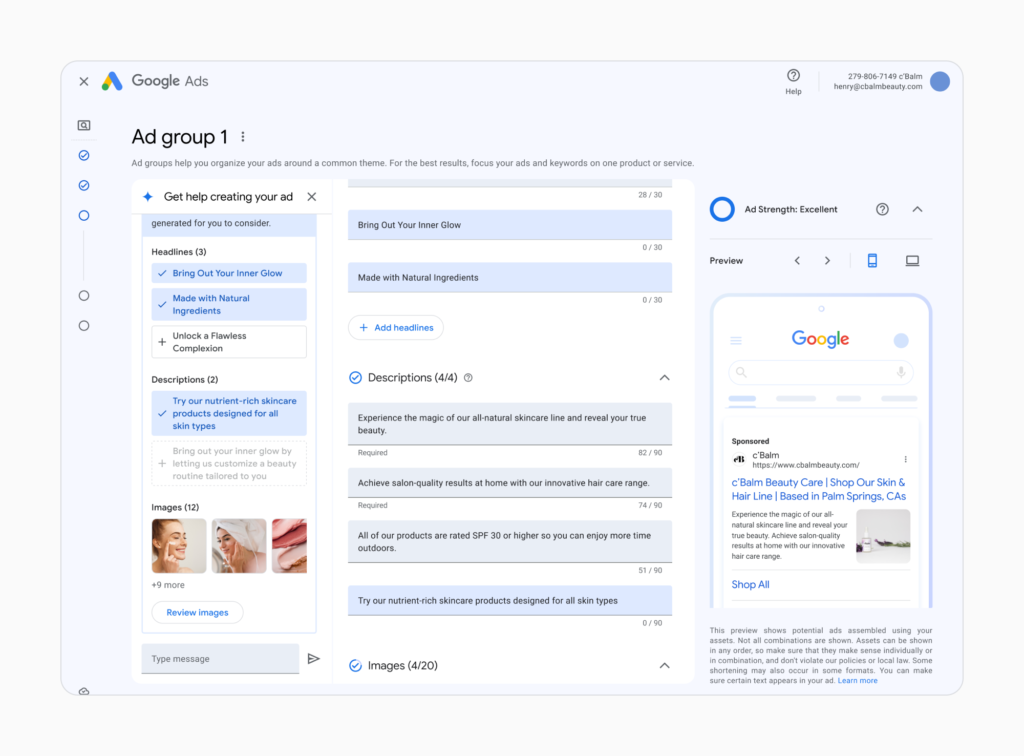
Image credit- Google
Google’s Ongoing Application of Generative AI
By offering a more automated and effective workflow, the new generative AI features coming to Google Ads seek to reduce the complexity of contemporary digital advertising. Advertisers should be able to quickly handle changing customer behavior and the increasing need for more individualized and successful advertising tactics thanks to these new technologies. Google’s AI-powered upgrades to its ad platform offer capabilities that might greatly speed up the production and placement of ads, making them more effective and targeted in a world that is becoming more automated.
Read More: Google Secretly Alters Ad Auctions to Boost Revenue Targets
MGID deepens partnership with GeoEdge to Enhance Ad Security
MGID, a worldwide advertising platform, has deepened its cooperation with GeoEdge. The latter is the foremost source of ad security and superior solutions for the online and mobile advertising market. The relationship, which has been successful for years, allowed for the identification of numerous different types of cloaking techniques over tens of thousands of instances, which led to growth. The compliance team at MGID can be confident that campaigns launched through its platform are secured using cutting-edge advertising technology thanks to this confirmed, long-term partnership with GeoEdge.
MGID’s comprehensive security suite:
MGID’s security solutions provide:
- Latest threat recognition algorithm – GeoEdge regularly updates algorithms for monitoring current and potential threats, concentrating on verticals that the compliance team at MGID has designated as critical. This makes it possible to anticipate violations and respond to them right away.
- Grouping violations using artificial intelligence (AI) – AI models create violation scenarios to foresee banned actions at the content and ad creation campaign stage so that MGID’s AI-generated creatives are compliant by default.
- Amplifying manual verification resources – Specialized regional teams check the status of rotating advertising content 24/7, paying consideration to even the slightest details of violations, like stolen design elements and made-up remarks.
- No tolerance for malware and malevolent material – MGID always blocks or further examines any content that may include malware, malicious intent, or phishing techniques before it is allowed to enter the system.
- Strong authentication process – Before beginning any activity on the MGID platform, all clients must go through personal verification and provide the necessary paperwork. These procedures are known as KYC (Know Your Customer) and KYB (Know Your Business).
Read More: Zeotap Data Joins TikTok to Enhance Targeting And Boost Ad Campaign
Here’s what they said
Sergii Denysenko, CEO of MGID said,
Digital advertising is caught in an endless arms race between legitimate actors and fraudsters that siphon ad spend from the supply chain, impacting advertisers, publishers, and users. To protect our clients and the wider open web, we seek partnerships with leading innovators, such as GeoEdge, in the fight against deceptive and fraudulent ads. The results of our collaboration so far speak for themselves, and we look forward to our continued work together.
Amnon Siev, CEO of GeoEdge commented,
Escalating threats from malicious actors present persistent challenges across the entire digital advertising supply chain. As these cyber adversaries refine their tactics, MGID leverages GeoEdge’s insights into the threat environment, empowering MGID to combat malvertising and protect its partners from cybercriminal activities.
About MGID
Brands may reach distinctive local audiences at scale with the support of the TAG-certified global advertising platform MGID. It serves high-quality, pertinent advertisements in brand-safe, fraud-protected environments using AI-based technology that prioritizes privacy. To provide a good user experience, the organization offers a number of ad types, such as native, display, and video. As a result, publishers can keep their audiences and monetize them, while advertising may increase performance and exposure. Through collaborations with GeoEdge, Pixalate, and AdSecure, MGID uses a combination of AI and manual evaluation. Furthermore, it also monitors techniques to identify and eliminate advertising that is against company regulations, damaging to users, and generally detrimental to the ad ecosystem. With 25 thousand reputable publishers, MGID reaches 900 million unique readers each month and generates 200 billion ad impressions.
About GeoEdge
The goals of GeoEdge are to uphold customer satisfaction and the integrity of the digital advertising ecosystem. So that publishers can concentrate on their business success, GeoEdge’s cutting-edge security solutions guarantee high ad quality and confirm that websites deliver a clean, safe, and engaging user experience. GeoEdge is used by publishers all over the world to block harmful and subpar adverts from reaching their audience. By utilizing GeoEdge, publishers can boost customer loyalty, safeguard their brand’s reputation, and optimize ad revenue without worrying about quality. Without compromising revenue, GeoEdge protects digital businesses from intrusive, harmful, rude, and inappropriate adverts.
Read More: Advertisers Embrace Programmatic Advertising As Cookies Decline
Microsoft Advertising Enters the Video and CTV Advertising Realm
At the DMEXCO conference, Microsoft Advertising unveiled a brand-new video ad product called Video and Connected TV (CTV) ads. Advertisers can now create online video and CTV ad campaigns on the Microsoft Advertising platform, thanks to the company’s video ad offering. The novel solution offers specific reach across large-scale properties to guarantee that the ad is presented to the appropriate target audience. The offering engine accepts search data. The internet juggernaut wants to profit from the burgeoning digital video landscape. By 2024, it is anticipated that people will spend 3.5 hours daily on average.
How does it work?
The new platform does not require advertisers to learn how to use the new platform. No set-up fees or lengthy onboarding procedures are needed, and campaigns are straightforward to optimize. The same platform offers the possibility to target ads on CTV. Because of this, creating campaigns only requires a few clicks. The only thing advertisers need to do is upload video assets that best represent their brands. Additionally, they must determine who they want to expose their ads to as well as how frequently they should do so across multiple devices. Setting frequency caps, reporting on domains where ads are served, and excluding any domains where ads should not be served are all features available.
Why should advertisers care?
Video and connected TV (CTV) capability increases conversion possibilities. It expands the options for ad-serving and using audience analytics to target high-value consumers. The choice to run commercials online or on CTV is also available. Advertisers can purchase CTV ads through a cost-per-completed view mechanism to target audiences on smart TVs and connected devices.
Moreover, according to Microsoft, search data is one of the most important components to enable this CTV and video service. Even when watching television, online searches have developed into one of the most potent intent signals. It is now a clear indicator of consumer intent. It reveals what the current needs of consumers are. Search offers information that can later be converted into marketing.
The rise of multi-screen viewing
As multi-screening is becoming popular, Microsoft’s new offering comes at a crucial time. According to recent studies, 4 out of 5 consumers read online news while watching TV, highlighting the opportunity for advertisers to target audiences who engage in multi-screen behaviors. Furthermore, 90% of Gen Z viewers in the U.S. utilize a second screen in addition to TV. This behavior creates attractive opportunities for marketers to better engage viewers. Even though the data just pertains to the U.S. market, the product is currently conducting pilots in 34 markets, with more than 405 billion monthly CTV impressions and 1.6+ trillion video impressions.

Image credit- Microsoft Advertising Blog
Video and CTV ads highlights
Microsoft’s access to billions of first-party data points is what distinguishes this platform. It makes it possible for advertisers to precisely identify their target market. Advertisers can target viewers on desktop, smartphone, and tablet devices with online video advertising purchased using a viewable CPM model for both in-stream and out-stream placements. User behavior from Bing, Microsoft Edge, Microsoft Start, and other properties is included in this treasure trove of data.
Max, Hulu, and Bloomberg are just a few of the venues where you can see video and CTV advertisements. Additionally, it has been reported in media sources like the Wall Street Journal, MSN, and the Huffington Post. A hyper-targeted audience is created by the platform using machine learning algorithms based on a variety of variables, including product preferences, demographic data, and browsing patterns. The goal of this strategy is to make targeted ads better so that marketers can reach the most relevant audiences.
Read More: Loop Media-Microsoft Advertising Forge New CTV OOH Inventory Category
Search data insights
One type of data used to create intelligence signals is search. However, Microsoft permits the use of billions of legal first-party data sets across numerous properties in advertising. They range from preferences for content and brands to LinkedIn profiles and much more. All of these signals are applicable to the video targeting feature. Based on viewing and browsing information, Microsoft Advertising Video and CTV advertising enable advertisers to use these signals to place brands in front of viewers with the appropriate messages.
Forecasts suggest a significant increase in ad expenditure
Forecasts indicate that between 2023 and 2025, U.S. programmatic video ad expenditures will increase by $22.51 billion (30.2%). The latest feature from Microsoft is made to effectively develop this growing pattern. Another appealing factor is the ease of application. The announcement is noteworthy because it signals a significant effort in an industry that is constantly developing. Additionally, it provides marketers with a more comprehensive, data-driven tool for audience interaction. Microsoft’s CTV and Advertising Video advertisements provide targeted audience capabilities. The growing rivalry and possible ad saturation have led to continuous innovation for success.
Here’s what they said
Product Marketing Manager at Microsoft Advertising, Liam Mackessy, told Search Engine Land:
This product has been designed for ease of use. You can get started in just a few clicks, there are no long onboarding processes, no set-up fees, and it’s simple to optimise. We’re making CTV advertising, which typically can be a little bit more complex to buy, more accessible to a lot more advertisers on the Microsoft Advertising platform. However, we still provide control and flexibility to advertisers – they can set their own frequency caps so that they can accurately plan budgets and campaigns accordingly. We also have the usual domain reporting and domain exclusions to help advertisers keep track of where their ads are serving so that they can decide which sites they may not want their ads to be served on.
Read More: Microsoft Submits Revised Activision Blizzard Proposal to UK’s CMA

